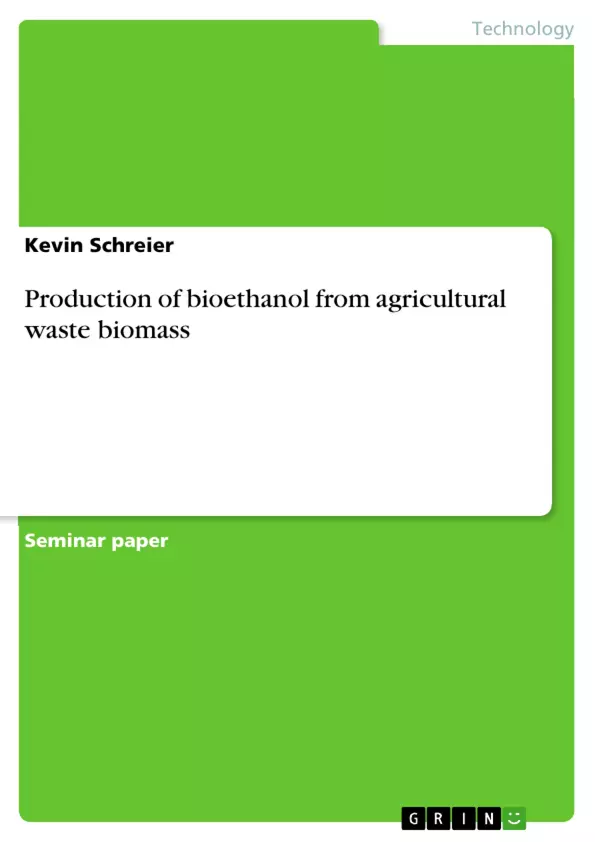The need of bioenergy due to the world’s increasing population and the limited fossil energy resources, which by combustion are damaging the environment, leads to the demand of renewable energy resources. Waste biomass, especially from agriculture, is an underestimated, but attractive alternative to food-crops for the sustainable production of ethanol from biomass and able to replace petroleum-based fuels.
The conversion-technology of agricultural waste biomass to bioethanol is already at the demonstration-stage. Compared to first generation bioethanol, the second generation fuel requires a more complex preparation-step of the feedstock. Through its wide range of application is bioethanol already applied worldwide and being produced by waste biomass its future looks promising.
Table of Contents
- Introduction: the need of Bionenergy - an opportunity for waste biomass
- Agricultural waste biomass - an investigation
- Biomass Composition
- Bioethanol - a desired biofuel and a product of waste biomass
- Conversion Technologies
- Conversion of 1st generation bioethanol
- Conversion of 2nd generation bioethanol
- Application fields
- Image-References
Objectives and Key Themes
This text examines the potential of agricultural waste biomass as a sustainable source for bioethanol production. It aims to highlight the growing need for renewable energy resources, particularly in light of depleting fossil fuels and environmental concerns. The text focuses on the conversion process of agricultural waste into bioethanol, highlighting the potential of this second-generation biofuel as a viable alternative to conventional petroleum-based fuels.
- The rising need for renewable energy resources due to limited fossil fuels and environmental concerns.
- The potential of agricultural waste biomass as a sustainable source for bioethanol production.
- The conversion process of agricultural waste into bioethanol and its advantages over first-generation bioethanol.
- The potential applications of bioethanol as a viable alternative to conventional petroleum-based fuels.
- The economic and environmental benefits of utilizing waste biomass for bioenergy production.
Chapter Summaries
- Introduction: the need of Bionenergy - an opportunity for waste biomass: This chapter addresses the global energy crisis and the urgent need for renewable energy sources. It presents biomass, particularly agricultural waste, as a promising alternative to fossil fuels and discusses its potential to contribute to sustainable energy production.
- Agricultural waste biomass - an investigation: This chapter provides a detailed overview of agricultural waste biomass, exploring its various sources and composition. It delves into the different types of biomass residues, including field-based and process-based residues, and highlights the importance of utilizing these resources for bioenergy production.
- Biomass Composition: This chapter examines the chemical composition of biomass, focusing on key compounds like cellulose, hemicelluloses, and lignin. It explains how these compounds contribute to the energy potential of biomass and discusses the variations in composition across different types of biomass.
- Bioethanol - a desired biofuel and a product of waste biomass: This chapter introduces bioethanol as a biofuel derived from biomass and emphasizes its importance as a sustainable alternative to petroleum-based fuels. It explores the advantages of bioethanol as a renewable energy source and discusses its potential to contribute to a greener future.
Keywords
This text focuses on the crucial concepts of waste biomass, bioethanol, conversion technologies, biofuel, and renewable energy sources. It explores the potential of using agricultural waste biomass for sustainable bioethanol production as a solution to global energy needs and environmental concerns. The text investigates the various conversion technologies involved in transforming waste biomass into bioethanol and highlights the benefits of this second-generation biofuel in reducing dependence on fossil fuels.
- Quote paper
- Kevin Schreier (Author), 2016, Production of bioethanol from agricultural waste biomass, Munich, GRIN Verlag, https://www.hausarbeiten.de/document/354281


